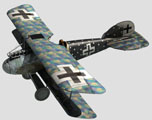
German 5 Color Lozenge
Camouflage Scheme
by Mark Miller
The WW1 German lozenge patterns
are some of the most interesting and distinctive camouflage schemes ever devised
and it always seemed strange to me that there were so many different interpretations
of the colors. If you look at illustrations, photos, and decals which depict
this scheme you will quickly see the huge differences in the colors and one
naturally begins to wonder which ones are correct.
One thing that has been a source of frustration for me is that people always
refer to Munsell and Meuthan numbers when describing WW1 aircraft color. I don't
have access to printed samples of these colors, so these numbers were useless
to me. This is why I was excited to find the Munsell color converter program
- a simple little windows application which allows you to input Munsell color
values, and returns a corresponding screen display and RGB, CMYK and LAB numbers.
This software if free and can be downloaded here: http://63.122.206.38/cmc/index.htm
The obvious goal here is
to try and determine what the "correct" colors are.
But, I think that it is important to keep in mind the difficulties in making
a determination of this type:
ANY attempt to exactly describe the color of an object is complicated by the
fact that color perception is, to some degree a subjective thing. Also, environmental
variables, like the color and intensity of the light are constantly changing,
which will drastically alter the appearance of a given color.
The various media that we need to rely on also adds to the problem: The samples
that are based on photographic sources are subject to all the variables of film
and exposure inherent in the process. And the problems associated with color
fidelity in any printed material are well known. And, finaly, this article,
being that it is internet based, is subject to the variables of monitors (see
Notes on Monitors )
And then there is the fact that the material we are examining is dyed fabric
that was manufactured almost 100 years ago by multiple vendors. I know very
little about dyes, but I am told that they are chemically unstable and that
over time can undergo extreme color shifts. Also, this fabric was then doped,
which, I am told, could result in a wide range of color shifts.
The point is - any conclusions as to what is "right" needs to be in
terms of a range of colors, and it is unrealistic to expect an exact solution.
That being said, I now feel
that some conclusions can be made.
My hope was, that I would eventually find two or more independently derived
sets of colors which showed some commonality.
I feel that the samples 2, 5, 6, and 7 presented for the upper colors do indicate
a likely range of colors. I should point out that this is a little deceptive
in that 2, 5, and 6 are all based on the same research and should be essentially
considered as one source. But, I feel that I can at least narrow the field down
with some degree of confidence (see my conclusions
)
I want to be as clear as possible here - this conclusion is only MY OPPINION.
As for the lower colors - they are pretty much all over the place. But, I will
make up a new swatch based on what I decided to trust on the uppers, and just
average them out.
If you have a different interpretation please contact me, and I will post your
opinion as well.
I have all the color swatches presented here in a multi-level Photoshop file
(.psd) if anybody would like to play with these colors, just contact me and
I will make it available to you.
The first three sets of
colors (labeled 1, 2, and 3) were generated using the Munsell Converter Program,
the rest of the samples were based on photographs and scans from various sources.
The idea here is simply to present as many interpretations as possible in a
consistent format so that it is easy to compare them to each other. If anybody
has further information or an additional set of colors please feel free to contact
me and I will add your data to the rest. My only requirements are that all samples
be presented in the exact same format as the rest, and that some explanation
be included as to the source of the data.
Mark Miller
mark_.m@sbcglobal.net

| 1 - NASM | 2 - Thiemeyer | 3 - From Scale Models (Dec 1969) | |
| Purple | 5P/3/4 | 2.5RP/3/2 | 2.5P/3.6/5.5 - 2P/3/6.8 |
| Ocher | 2.5Y/5/4 | 2.5Y/4/4 | 5.5Y/5.8/5.6 - 8.5YR/5.2/5.3 |
| Green | 7.5GY/4/4 | 10GY/4/2 | 6.5GY/5.7/3.2 - 7GY/5.6/4.4 |
| Blue | 5PB/2/6 | 5PB/3/2 | 5.5PB/3.2/6.4 - 5PB/2.9/7.6 |
| Blue/Green | 7.5BG/3/4 | 5B/2/2 | 6B/3.7/3.9 - 7B/2.9/3 |
Lower Surface

| 1 - NASM | 2 - Thiemeyer | 3 - From Scale Models (Dec 1969) | |
| Purple | 5P/4/4 | 5P/4/4 | 9.5P/5.1/5.1 - 5.5P/5/5.3 |
| Yellow | 10YR/6/6 | 10YR 6/8 | 3.5Y/7.6/7.7 - 7.5YR/7.3/7.6 |
| Lilac | 5RP/5/6 | 2.5RP/5/6 | 5.5RP/5.4/5.9 - 5.5RP/4.6/5.2 |
| Blue | 2.5PB/4/4 | 2.5PB/5/4&6 | 6PB/4/7.9 - 4.5PB/4.3/7.4 |
| Blue/Green | 7.5BG/4/4 | 7.5BG/5/4 | 8.5B/5.3/2.7 - 1.5B/5.3/1.9 |
1 - NASM
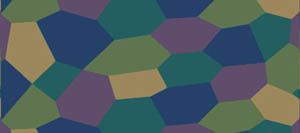
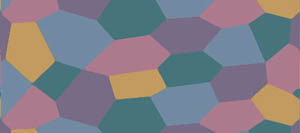
2 - Thiemeyer
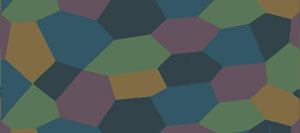
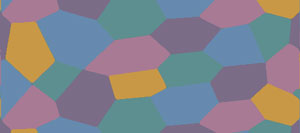
3 - From Scale
Models (Dec 1969) colors selected at mid-range
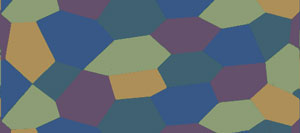
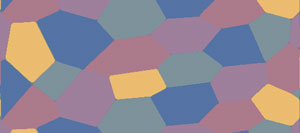
Schemes Based on Other Evidence
4 - NASM
"STROPP"
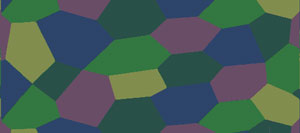
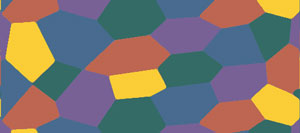
5 - Halberstat photos
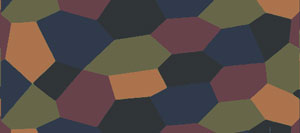
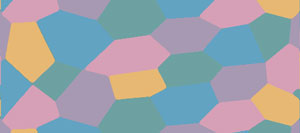
6 - Halberstadt
Fabric Samples
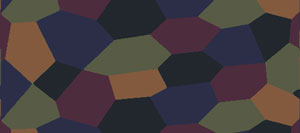
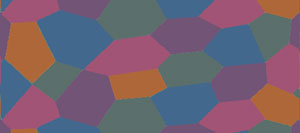
7 - Photos
of LVG Stabilizer at Hannover Laatzen (original)
both samples are of the upper colors
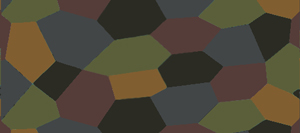
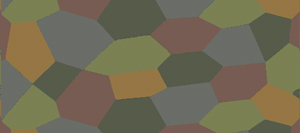
8
- Dan-San Abbott's fabric Samples from Pfalz
D.XII aileron (original)
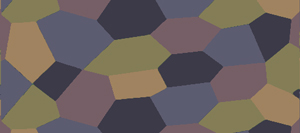

9
- Alan Toelle's Interpretation
- Based on various original fabric samples 7/31/03
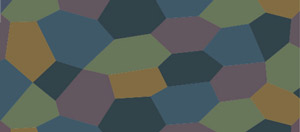
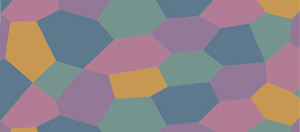
Source
of Data
1 - NASM
The Munsell numbers in the first column, appeared in the book, Albatros DVa,
German fighter of World War 1 Smithsonian Institute Press - Written by Bob Mikesh.
And they credit the color data to R.W. Bradford of the National Aeronautical
Collection, Ottawa Canada. The aircraft used was Fokker DVII 3659. Color sample
is located upper left
2 - Thiemeyer
This set of Munsell numbers was developed by Manfred Theimeyer in Cologn and
was based on his large collection of original fabric samples. This data was
then used in the restoration of US Air Force Museum Zebra Halberstadt, the Berlin
Halberstadt and the Munich /NASM Halberstadt (same aircraft as seen in # 5 below).
Also the basis for the Halberstadt fabric sample (see # 6 below)
Color sample is located upper right.
3 - Scale Model
Magazine
I found these numbers here: http://www.wwi-models.org/misc/lozenge.html
They are credited to the December 1969 Issue of Scale Models magazine from an
article entitled Camouflage Patterns. I also think they appeared in several
Datafiles.
The color sample is on the bottom - these colors were provided as a range, so
I made three boxes the ones on either side contain the solid colors, the one
in the middle is a gradient from one to another
4 - NASM "strop"
Lower colors derived from these photos by Cam Riley:
http://wwi-cookup.com/albatros/museum/nasm_cr001.jpg
http://wwi-cookup.com/albatros/museum/nasm_cr002.jpg
Upper colors derived
from the photo of the lower wing on page 90 of the NASM restoration book Albatros
D.Va, German fighter of World War 1.
My input on this was pretty poor (printed material) so in all fairness, I can't
say I have faithfuly reproduced the actual colors used on the NASM DVa.
Interesting how different the "actual" colors are that were used on
the NASM reproduction from those that you get from the Munsell numbers.
5 - Halberstadt Photos.
Photos of Halberstadt
Cl. IV, 8103/18, on loan from the NASM, currently in the Flugwerft Schleissheim,
the Oberschleissheim branch of the Deutsches Museum, Munich. Based on Thiemeyer
Munsel data (see 2 above)
Interesting to note that these colors although very similiar to the munsell
colors that they are based on, contain a lot more red, and are more saturated.
Based on photos by Hans Trauner found here:
http://www.wwi-models.org/Photos/Ger/Halb_ClIV/index.html
6 - Halberstadt Fabric
Samples
Finn Newick sent me scans of fabric samples of the material used on the German
Halberstadt restoration.
(See colors 2 and 4)
![]()

7 - Photo of LVG Tail
(original)
Hans Trauner sent me these two photos of an original LVG stabilizer in the Hannover
Laatzen museum. The part has not been restored or cleaned, and it appears to
me to be somewhat yellowed with age. I've made swatches based on each of the
photos as they have different lighting. This might seem like overkill, but i
would like to clearly illustrate the impact that lighting has on saturation
and contrast.
I've also included composite images for each sample that shows how I derived
the swatch colors. The first image shows the swatches overlayed on the original
photo, and the second image is the same thing except that the underlaying photo
has been modified using the Photoshop median filter. This filter samples a user
defined spred of pixels and derives a median value.
These images show fairly clearly that the selection of a representative color
is somewhat subjective exercise, but I think the choices I made are pretty viable.
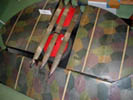
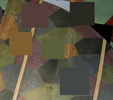
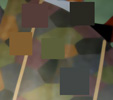
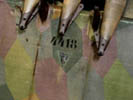
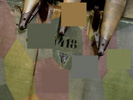
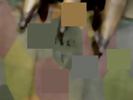
A little test to see what is needed to bring these 2 samples together

8 - Fabric
Samples from Pfalz D.XII aileron
This color sample was derived from scans of a print of a fabric sample owned
by Dan-San Abbott.
I corrected the scan on-line as per Dan's instructions so I think we can say
that this sample has the best chance of accurately reflecting it's origin.
I used the same method to generate the swatches as for the LVG tail






9 -
Alan Toelle's Interpretation
Alan has provided notes explaining how he derived this set of colors, as well
as some background information on early efforts to match WW1 colors to Munsell
data.
This is a very informative article that is well worth reading.
MY
CONCLUSIONS on Upper Colors
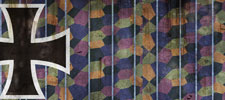
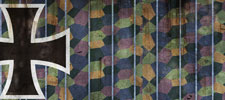
Jerry Boucher
Here's some swatches
that Jerry came up with based on this data and some of Charles Gosse's fabric
samples.
The rendering, also done by Jerry, depicts a Hanover as it would be seen with
these colors.
Images courtesy of and
copyright Jerry Boucher
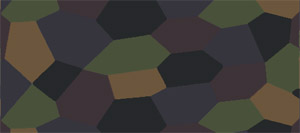
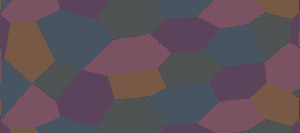
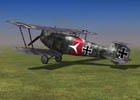
Renderings
My main
purpose for gathering this information was to enable me to generate a better
set of maps for my Virtual Albatros. After looking at this data it seems to
me that the upper colors used on the renderings labeled Deutsche Museum (5)
can be considered concievably correct. The upper colors on the NASM rendering
I now believe to be unfeasable and will discontinue it's use. However,
I do think that a scheme which tends more to blue/green side is concievable
and plan to generate a new map set that illustrates this possibility.
Deutsche
Museum
Based on fabric
samples (5)
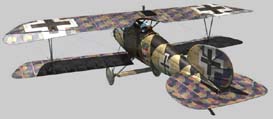


NASM
Based on Munsell Numbers (1)
